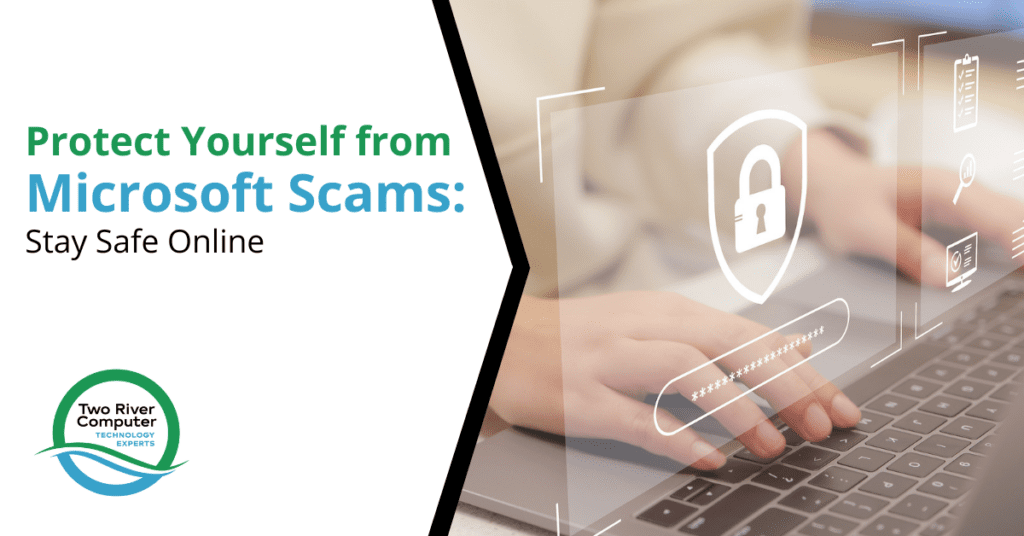
In today’s digital age, online scams have become increasingly sophisticated, targeting unsuspecting users with clever tactics. One such scam is the Microsoft scam, where users encounter a poisoned website that displays authentic-looking messages and plays alarming sounds, urging them to call an 800 number for assistance.
However, it’s important to remember that Microsoft would never use such aggressive methods to communicate with its users. In this article, we will delve into the details of the Microsoft scam, discuss ways to protect yourself, and provide guidance on what to do if you encounter such a situation on your computer.
What is the Microsoft Scam?
When users stumble upon a poisoned website, a popup window emerges, displaying frightening messages that mimic legitimate Microsoft warnings. These messages often claim that your computer is infected with malware, viruses, or that your personal information is at risk. Additionally, the scammers may play disturbing sounds, creating a sense of urgency and panic.
The scammers employ social engineering techniques to convince victims to call the provided 800 number. They exploit the fear and concern generated by the alarming messages to trick users into believing that immediate action is necessary to protect their computer and personal data. However, it’s crucial to recognize that these messages are part of the scam and not affiliated with Microsoft in any way.
Protecting Yourself from Microsoft Scams
Recognizing the Signs
Being aware of the signs that indicate a potential scam can help you stay vigilant and avoid falling prey to such fraudulent schemes. Some common indicators include:
- Unsolicited calls or pop-up messages claiming to be from Microsoft.
- Requests for remote access to your computer.
- Urgency and threats of consequences if immediate action is not taken.
- Requests for personal information or financial details.
Essential Precautions
To protect yourself from Microsoft scams and similar online threats, follow these important precautions:
- Keep your operating system and all software up to date with the latest security patches.
- Install a reliable antivirus program and keep it updated.
- Enable automatic updates for your software to ensure you have the latest security fixes.
- Be cautious while browsing the internet and avoid clicking on suspicious links or downloading files from unknown sources.
- Educate yourself about common scams and stay informed about emerging threats.
Dealing with a Microsoft Scam Encounter
If you find yourself trapped in a Microsoft scam scenario, here are the immediate steps you should follow:
- Do not panic. Remember that the messages and sounds are designed to create fear and urgency.
- Ignore the popup messages and avoid clicking on any buttons or links within the website.
- Press and hold the power button on your computer for a full 10 seconds to force a shutdown.
- Wait for an additional 10 seconds, then power your computer back on.
- After restarting, the malicious website should no longer be present.
Seeking Professional Help
In some cases, the above steps may not completely resolve the issue. If the scam website persists or you encounter any unusual behavior on your computer, it’s advisable to seek assistance from a trusted professional. Contacting a reliable computer technician or reaching out to Microsoft support directly can help address any lingering concerns and ensure the security of your system.
Safeguarding Your Online Experience
To create a safer online environment, it is vital to spread awareness about scams like the Microsoft scam. Share this information with your friends, family, and colleagues, and educate them about the telltale signs of fraudulent activities. By collectively staying vigilant, we can minimize the success rate of these scams and protect ourselves and others from falling victim to cybercriminals.
Protect Yourself From Microsoft Scams
As the prevalence of online scams continues to grow, it is crucial to remain cautious and informed about the various tactics used by cybercriminals. The Microsoft scam preys on individuals’ fear and lack of knowledge, but with awareness and the right precautions, you can protect yourself from falling victim to such fraudulent schemes.
Remember, Microsoft will never display alarming messages, play sounds, or request remote access to your computer to resolve issues. Stay alert, follow the recommended safety measures, and if in doubt, seek assistance from professionals or Microsoft directly. Safeguard your online experience and stay one step ahead of scammers.
Contact Two River Computer today for more information on online security and to ensure your digital safety.


